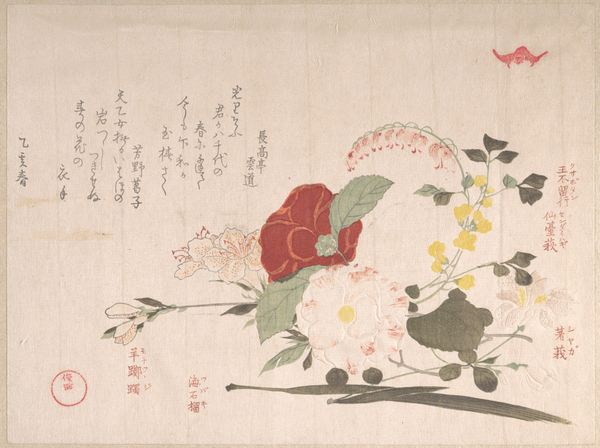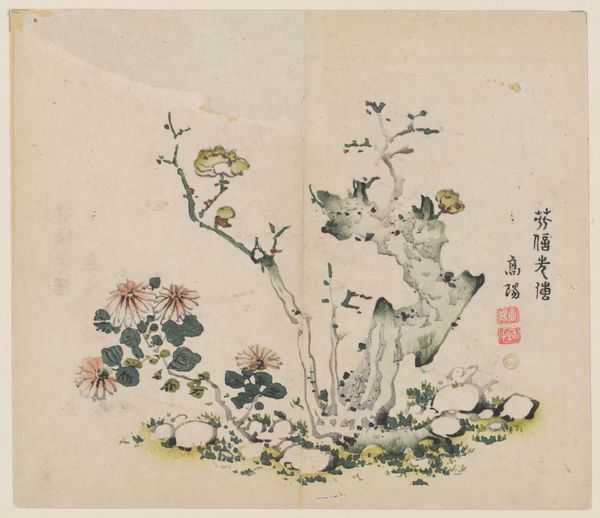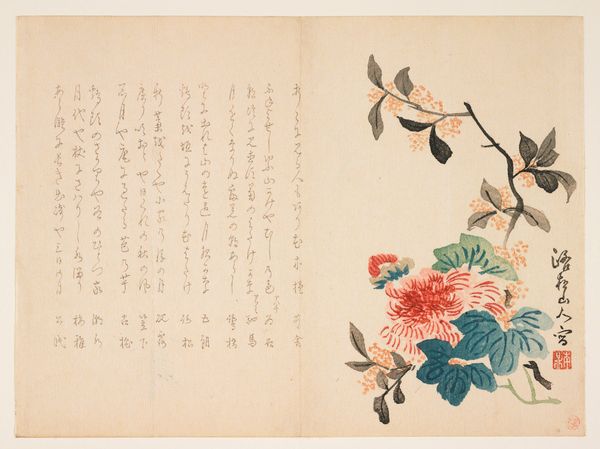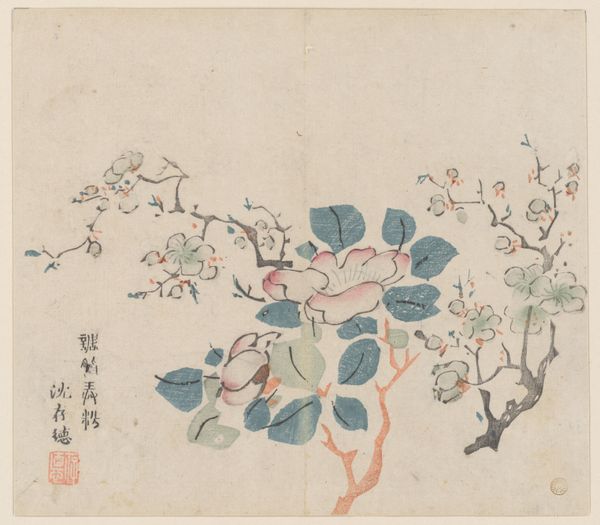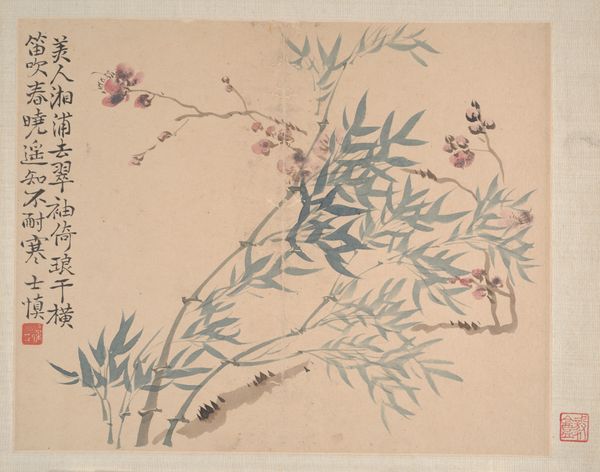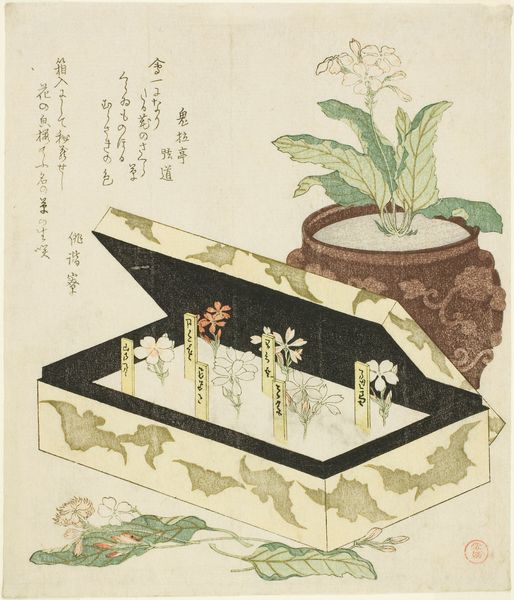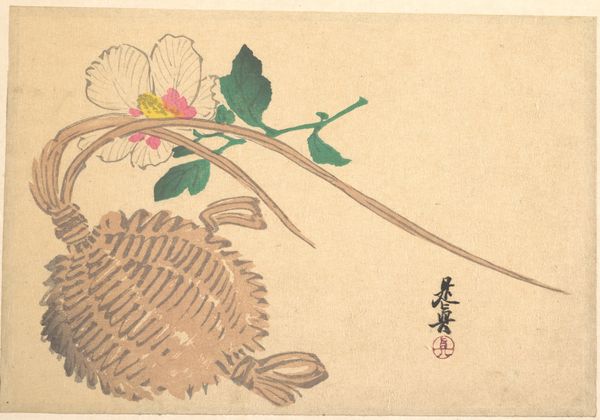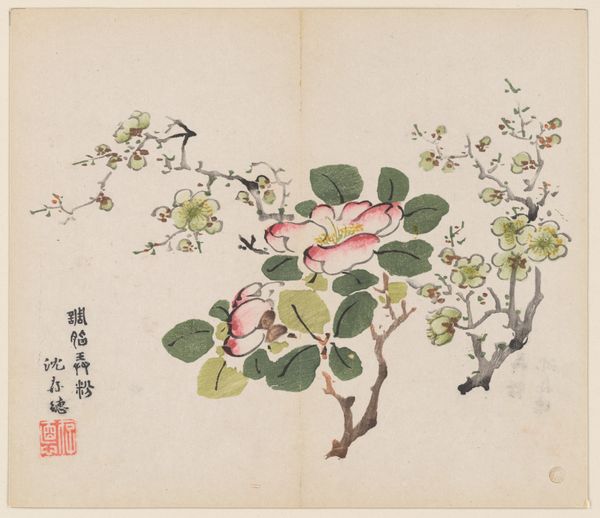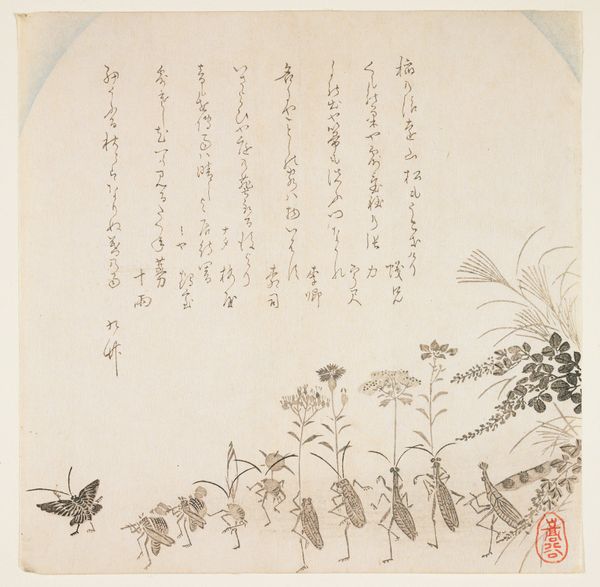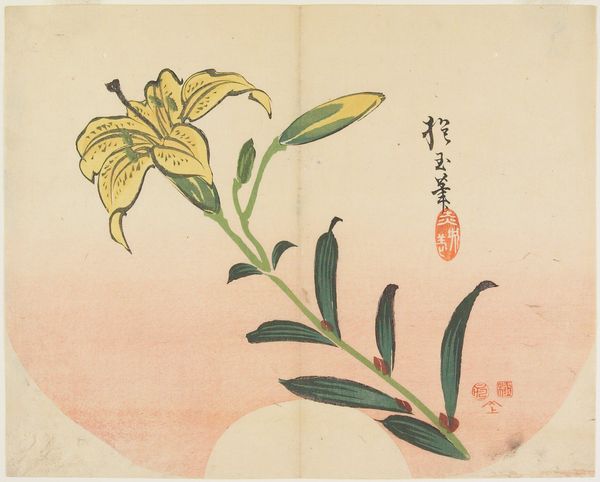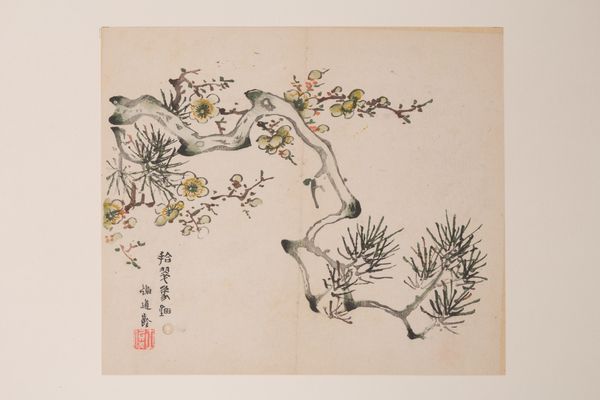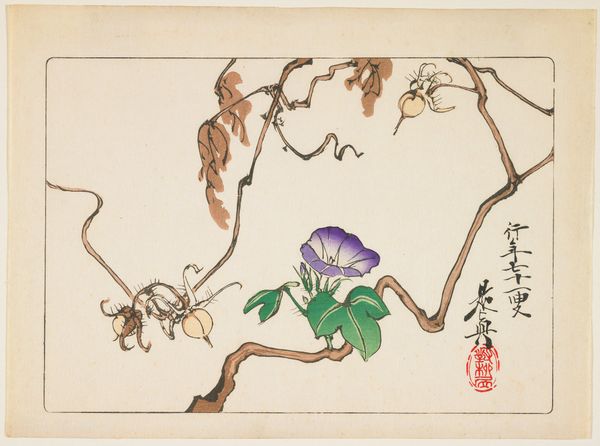
print, watercolor, ink
#
water colours
# print
#
landscape
#
ukiyo-e
#
japan
#
watercolor
#
ink
#
orientalism
#
watercolor
Dimensions: 16 1/16 x 21 3/4 in. (40.8 x 55.2 cm) (image, sheet)
Copyright: Public Domain
Editor: Here we have "Autumn Flowers" by Yamanaka Shōnen, created around the 1810s. It's a watercolor and ink print. What strikes me is how it depicts a garden scene with this amazing level of detail, using such simple materials. How would you interpret this work? Curator: As a print, we must consider the reproducibility of this artwork and its impact. How did these ink and watercolour techniques contribute to mass dissemination, allowing wider access to artistic expression? We should examine the materials, the paper, the inks: are they locally sourced or imported? What can the pigment tell us about trade routes and the availability of resources during the Edo period? Editor: That’s a good point about accessibility. Did the commercial nature of *ukiyo-e* prints democratize art in any way? Curator: Precisely. These weren’t unique artworks intended for an elite clientele; these prints were consumer goods, impacting taste and social customs, making the consumption of artistic imagery available to a wider audience. The choice of autumn flowers is interesting too. Were these flowers easily available, and did their visual appearance become increasingly prevalent as subjects for replication via this technology? We might even think of this print as an early form of mass-produced seasonal decoration, indicative of specific practices of cultural consumption and production. Editor: It’s fascinating to think about this artwork as an object within a much wider network of material culture. I had never considered this angle. Curator: By emphasizing production and distribution of such artworks, we can uncover intricate details of everyday practices in 19th century Japan.
Comments
No comments
Be the first to comment and join the conversation on the ultimate creative platform.
